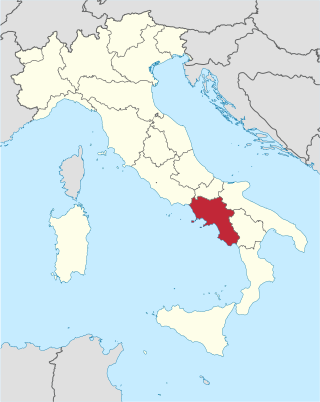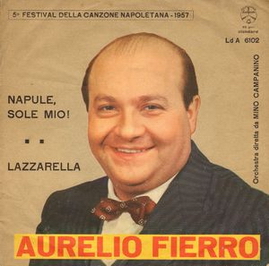
Campania is an administrative region of Italy; most of it is in the south-western portion of the Italian peninsula, but it also includes the small Phlegraean Islands and the island of Capri. The capital of the Campania region is Naples. As of 2018, the region had a population of around 5,820,000 people, making it Italy's third most populous region, and, with an area of 13,590 km2 (5,247 sq mi), its most densely populated region. Based on its GDP, Campania is also the most economically productive region in southern Italy and the 7th most productive in the whole country. Naples' urban area, which is in Campania, is the eighth most populous in the European Union. The region is home to 10 of the 58 UNESCO sites in Italy, including Pompeii and Herculaneum, the Royal Palace of Caserta, the Amalfi Coast, the Longobardian Church of Santa Sofia in Benevento and the Historic Centre of Naples. In addition, Campania's Mount Vesuvius is part of the UNESCO World Network of Biosphere Reserves.

Naples is the regional capital of Campania and the third-largest city of Italy, after Rome and Milan, with a population of 909,048 within the city's administrative limits as of 2022. Its province-level municipality is the third-most populous metropolitan city in Italy with a population of 3,115,320 residents, and its metropolitan area stretches beyond the boundaries of the city wall for approximately 30 kilometres.

In Italy, music has traditionally been one of the cultural markers of Italian national and ethnic identity and holds an important position in society and in politics. Italian music innovation – in musical scale, harmony, notation, and theatre – enabled the development of opera, in the late 16th century, and much of modern European classical music – such as the symphony and concerto – ranges across a broad spectrum of opera and instrumental classical music and popular music drawn from both native and imported sources.

Mina Anna Maria Mazzini or Mina Anna Quaini, known mononymously as Mina, is an Italian singer and actress. She was a staple of television variety shows and a dominant figure in Italian pop music from the 1960s to the mid-1970s, known for her three-octave vocal range, the agility of her soprano voice, and her image as an emancipated woman.
Naples has played an important and vibrant role over the centuries not just in the music of Italy, but in the general history of western European musical traditions. This influence extends from the early music conservatories in the 16th century through the music of Alessandro Scarlatti during the Baroque period and the comic operas of Pergolesi, Piccinni and, eventually, Rossini and Mozart. The vitality of Neapolitan popular music from the late 19th century has made such songs as'O Sole mio and Funiculì Funiculà a permanent part of our musical consciousness.
Canzone napoletana, sometimes referred to as Neapolitan song, is a generic term for a traditional form of music sung in the Neapolitan language, ordinarily for the male voice singing solo, although well represented by female soloists as well, and expressed in familiar genres such as the love song and serenade. Many of the songs are about the nostalgic longing for Naples as it once was. The genre consists of a large body of composed popular music—such songs as "'O sole mio"; "Torna a Surriento"; "Funiculì, Funiculà"; "Santa Lucia" and others.

Stefano Bollani is an Italian composer, pianist and singer, also active as a writer and a television presenter.

Massimo Ranieri is an Italian singer, actor, television presenter and theatre director.

Arnoldo Foà was an Italian actor, voice actor, theatre director, singer and writer. He appeared in more than 130 films between 1938 and 2014.
This is an alphabetical list of the 7,918 Italian municipalities (comuni). These represent the fundamental municipal units of the local government system of the country.
"Malafemmena" is a song written by the Neapolitan actor Totò in 1951. It has become one of the most popular Italian songs, a classic of the Canzone Napoletana genre, and has been recorded by many artists.
The Nastro d'Argento is a film award assigned each year, since 1948, by Sindacato Nazionale dei Giornalisti Cinematografici Italiani, the association of Italian film critics.

Loris Gizzi was an Italian actor.

Fiorenza Calogero is an Italian world music singer and actress from Naples, Italy.

"Lazzarella" is a song composed by Domenico Modugno and Riccardo Pazzaglia. The song, with a performance by Aurelio Fierro, ranked second at the fifth edition of the Festival di Napoli. It also got an immediate commercial success, peaking at second place on the Italian hit parade.
The Targa Tenco is a prize awarded annually by the Club Tenco. Founded in 1984, it has a large jury of 200 journalists and critics awarding the best works of the year. It is considered the most prestigious award in Italian music.










